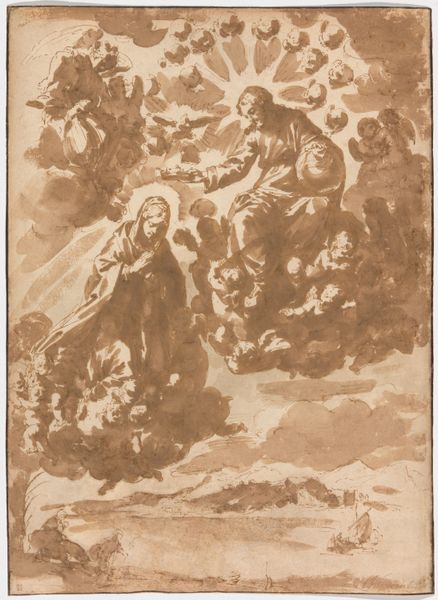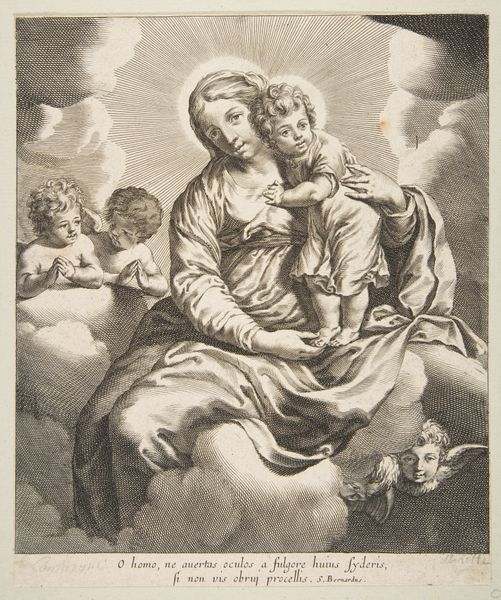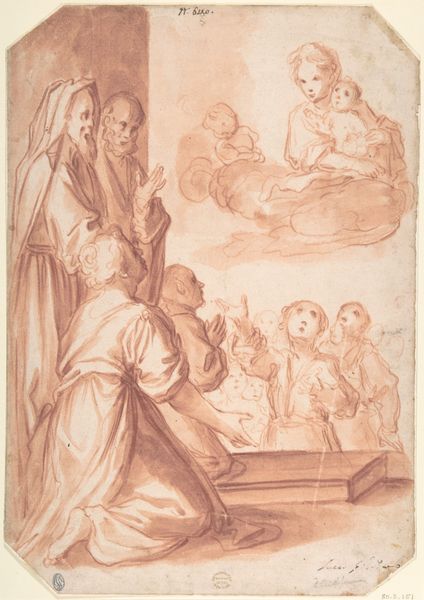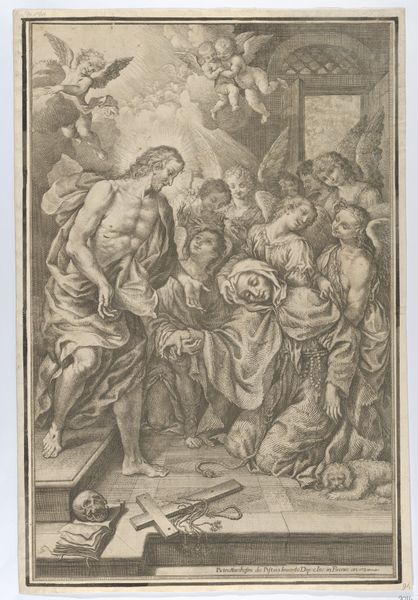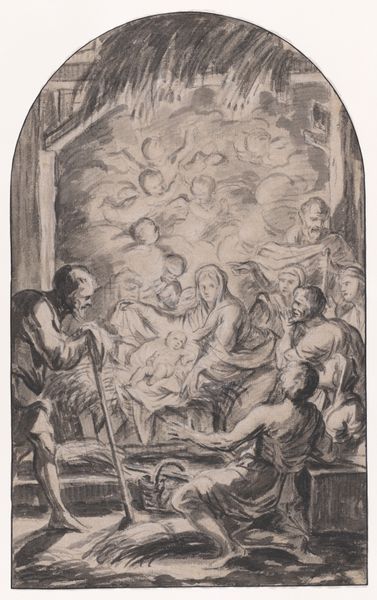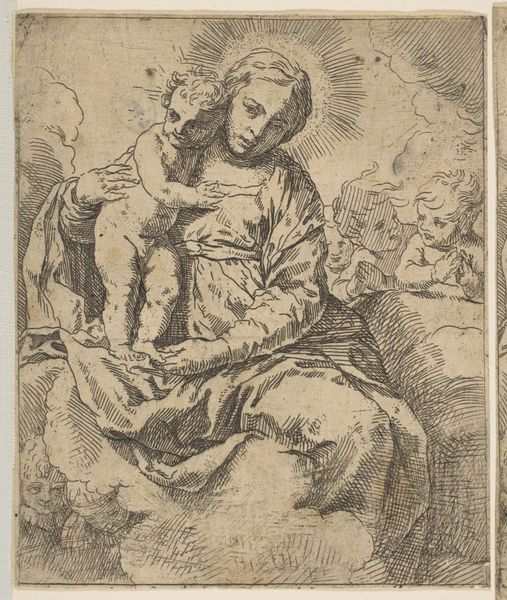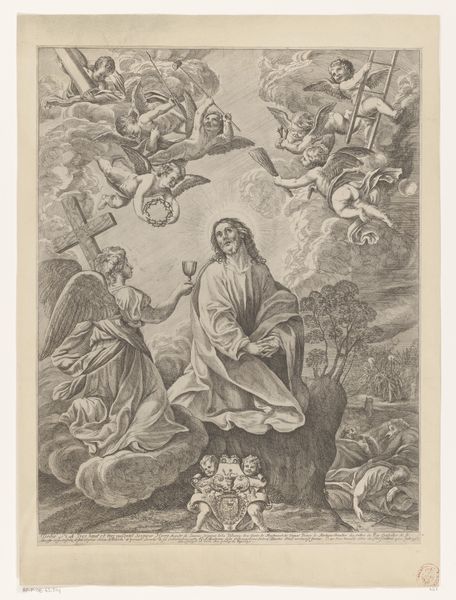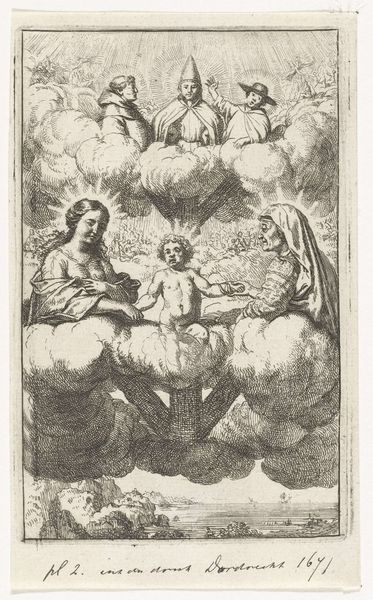
Dimensions: Sheet: 16 3/4 × 11 5/16 in. (42.6 × 28.7 cm)
Copyright: Public Domain
Editor: Here we have Andrea Scacciati’s "The Death of Saint Anne," an ink drawing from 1766. It feels quite grand, with the swirling figures and the presence of God above. What do you make of the composition and its historical context? Curator: It’s crucial to understand the historical currents informing a piece like this. How do you think the Catholic Counter-Reformation impacted the demand for imagery depicting saints' lives and deaths? The elaborate Baroque style aimed to inspire awe and piety. Consider where this drawing may have been viewed or used. Editor: I hadn’t thought about that aspect. So, was it likely a study for a larger piece destined for a church, intended to reinforce religious doctrine? Curator: Exactly! Think about the patronage system then. The Church and wealthy families commissioned works to showcase their piety and power. Scacciati uses dramatic diagonals and chiaroscuro. But notice that some elements of it do not align with the more dogmatic approaches after the Council of Trent. Editor: That's interesting. It's a preparatory work, so do you think he pushed against what the public representation should look like at the time and did not care about that until creating the actual, larger piece? Curator: Potentially, or it gives us some insight into the freedom the artists were given at this time. It brings us to think if there are visual aspects you see that can support that argument. The overall reception might also have varied based on whether it was viewed within a public religious setting or a more private, domestic space. Editor: It makes me think about the function of religious imagery in the 18th century. Curator: Precisely! By understanding its social and institutional role, the piece goes from being a beautiful sketch to something dense with social commentary about baroque history-painting in the public eye.
Comments
No comments
Be the first to comment and join the conversation on the ultimate creative platform.
